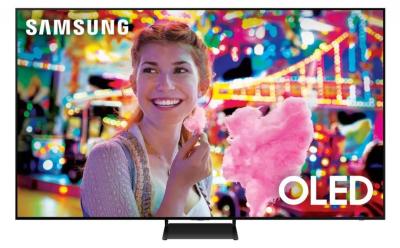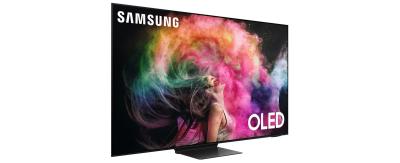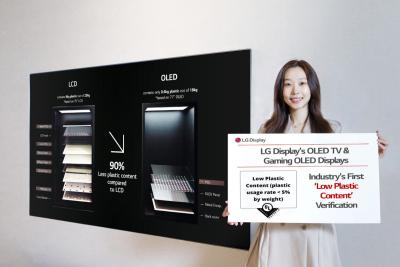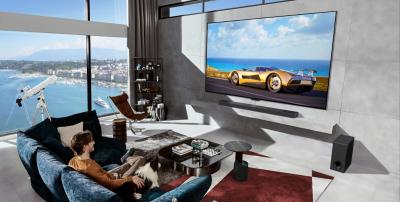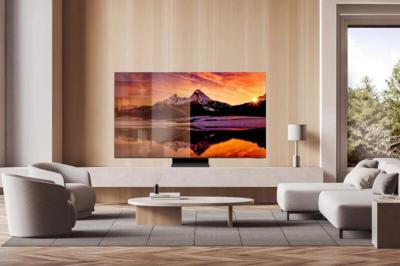LG Display to increase its WOLED panel shipments to Samsung, will reach almost 1 million units in 2024
According to a new report in Korea, LG Display aims to increase its OLED TV panel shipments to Samsung Electronics in 2024, and to reach almost 1 million units.
Samsung has recently signed a five-year OLED TV panel supply agreement with LG Display, as the two Korean companies are increasing their collaboration to fend off competition from China.
Seoul Metro installs more transparent OLED based AI translation services throughout the city
Towards the end of 2023, Seoul's Metropolitan Government has initiated a new pilot test at Myeong-dong Station that offers an AI-powered translation service for tourists that enables them to communicate with the subway staff through a transparent 55" LG OLED display.
The pilot was successful, and Seoul's Metro expanded the service to 11 stations, throughout Seoul. This is one of the first useful applications of transparent OLED displays, and it is great to see it expanded in Korea. We do not know whether there are any plans to roll out more such displays in Korea.
Samsung's upcoming S90D OLED TV lineup will feature displays utilizing both WOLED QD-OLED panels
According to reports from Korea, LG Display requested Samsung Electronics to use its WOLED panels on the same tier as SDC's QD-OLED panels, and Samsung will use both panel technologies in its S90D OLED TV series. Samsung will likely not disclose the actual panel technology to the consumer, and will likely decide on the panel technology per region.
The Samsung S90D will offer 42-, 48-, 55-, 65-, 77- and 83-inch panels. SDC only makes 55, 65, and 77-inch QD-OLED panels, and so in these sizes both QD-OLEDs and WOLEDs will be used. For the 42-, 48- and 83- models Samsung will only use WOLEDs.
LG Display's WOLED panels receive new low-plastic and eco-friendliness certifications from UL and SGS
LG Display says that its WOLED TV and gaming displays have been awarded UL's low-plastic verification, given to products in which the plastic usage accounts to less than 5% of their total weight.
LGD says that its 65-inch OLED TV panel contains about 4% plastic content, about 905 lower than to a 65" LCD panel. In addition, by substituting key components with easily recyclable materials, LG Display has increased the recyclability of parts to as high as 92.7% at disposal.
Samsung: we sold 1 million OLED TVs in 2023 and had a market share of 22.7% in the OLED TV market
Samsung announced that in 2023 it retained its market-leading position in the TV mraket, with a 30.1% market share (revenues). The company also disclosed that it sold 1.01 million OLED TVs in 2023 - mostly QD-OLED TVs, and some WOLED TVs as well.
Samsung quotes Omdia saying that it had a 22.7% market share in the OLED TV Market (by revenue), which is pretty impressive, as the company is relatively very new to this market.
LG Display said to be progressing with its 8.6-Gen IT AMOLED line plans, to announce its plans in H2 2024
According to recent rumors, LG Display has decided to go ahead and build its 8.6-Gen (2250 x 2600 mm) IT AMOLED line, in Paju, Korea (at its P10 hub, which was originally planned for OLED TV production). The company recently started to conduct discussions with equipment makers for supply agreements.
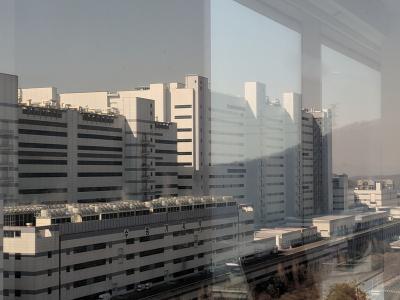
LG Display's plan is to officially announce its 8.6-Gen production line plans in the second half of the year, and start ordering equipment. It is likely that the capacity of the fab will be between 7,500 to 15,000 monthly substrates. LG will be using its P10 building and existing equipment (backplane deposition) to reduce the costs of the 8.6-Gen line. This will mean that there will be delays to LG's WOLED TV panel capacity expansion plans.
Samsung Electronics signs a 5-year WOLED supply agreement with LG Display
In July 2023, Samsung Electronics officially launched the 83" 83S90C, the company's first TV to use LG's WOLED panels, following several years of negotiations and hesitation by the Korean rivals. Samsung then continued to launch more WOLED TVs, but did not made large orders, as it mainly uses QD-OLED panels from SDC for its high-end TVs.
According to a new report, Samsung Electronics has signed a five-year WOLED supply agreement with LG Display. This is an interesting development that may have implications for Samsung Display's QD-OLED production plans. We do not have more details, it will be interesting to learn what kind of volumes Samsung committed to.
LG Display returns to profit as OLED smartphone and TV shipments increase
LG Display announced its financial results for Q4 2023, with an operating profit of almost $100 million - after 7 quarters of losses. LGD says that demand for both its smartphone displays and WOLED panels (TVs and monitors) has increased. OLED revenues amounted to 57% of the company's total revenues during the quarter.
LG Display says that it expects market volatility to continue in 2024, due to prolonged unstable macroeconomic conditions. The company will be "strengthening the competitiveness of its OLED businesses", and it expects OLED panel shipments to grow 20% in 2024 compared to 2023. In the upcoming Q1 2024 quarter analysts expected earnings to weaken due to low seasonal demand.
New OLED TVs, monitors, laptops and prototypes announced at CES 2024
During CES 2024, many device makers announced new laptops, monitors and TVs that use OLED displays. Here's a list of all these new devices:
- MSI Monarch 13 laptop (13.3" 2.8K AMOLED)
- LG OLED B4, C4, G4, M4 (WOLED TVs)
- Samsung Odyssey G9 monitor (49" 5120x1440 240Hz QD-OLED)
- Samsung Odyssey G8 / G6 monitors (27" 1440p 360Hz / 32" 4K 240Hz QD-OLED)
- Razer Blade 16 2024 laptop (16" 2560x1600 240Hz SDC AMOLED)
- Dell 2024 XPS 13 / 14 / 16 laptops (16" 90Hz 4K / 14.5" 120Hz 3200x2000 / 13.4" 2880x1800 60Hz AMOLED)
- Acer Predator X34 X / X39 monitors (4" / 39" 3440x1440 240Hz OLED)
- LG Signature OLED T (77" 4K wireless transparent WOLED TV)
- Samsung S95D, S90D, S85D (QD-OLED and WOLED TVs)
- Gigabyte AORUS 2024 QD-OLED monitors (27", 31.5", 34" QD-OLEDs)
- Acer 2024 Swift 14 X / Swift Go 14 / Swift Go 16 laptops (14" / 16" AMOLEDs)
- Panasonic Z93A, Z95A (WOLED TVs)
- HP Omen Transcend 32 gaming monitor (32" 240Hz 4K QD-OLED)
- Dell Alienware AW2725DF / AW3225QF monitors (27", 32" QD-OLEDs)
- HP 2024 Spectre x360 14 laptop (14" AMOLED)
Samsung unveils its 2024 OLED TV lineup
Samsung Electronics announced its 2024 OLED TV lineup, with 3 series. The company's flagship OLED TV for 2024, the S95D, offers 55-, 65-, or 77-inch 4K 144hz QD-OLED panels, offering high brightness (up to 3000 nits peak brightness), a new anti-glare coating to minimize reflections, Tizen 8.0 OS, and an external One Connect box for a sleek design. The S95D offers AI-Enhanced color accuracy - validated by Pantone.
Samsung also announced two more series - S90D and S85D. Interestingly, it did not detail whether these TVs use QD-OLED (produced by SDC) or WOLED panels (produced by LGD) - or a mix as it did last year within the same series.
Pagination
- Previous page
- Page 2
- Next page
